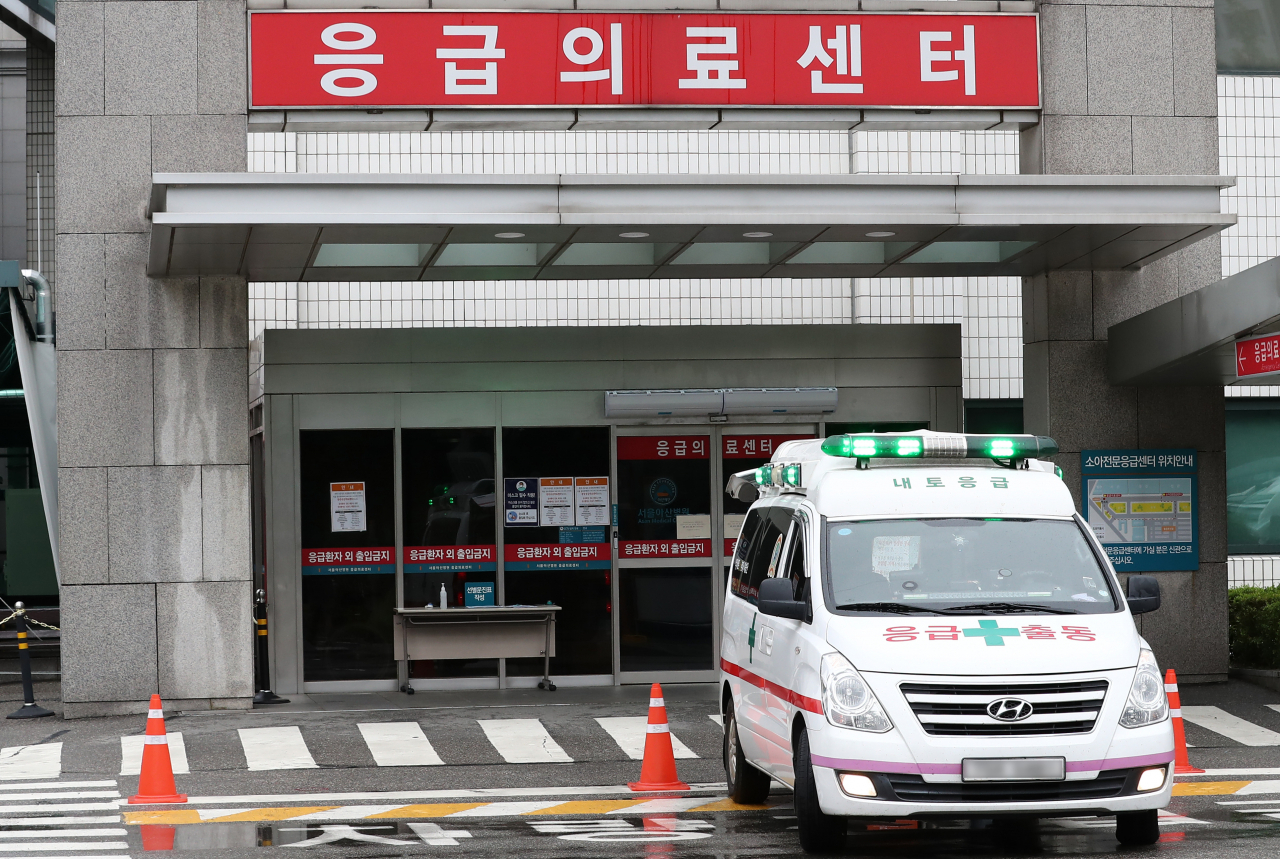Rural S. Korea faces stark health care inequality: report
By Moon Ki HoonPublished : Sept. 4, 2023 - 17:51

South Koreans living in rural areas have double the risk of delayed access to emergency health care compared to urban residents, highlighting the country's significant urban-rural disparity in crucial healthcare infrastructure, the National Medical Center reported on Sunday.
The center’s 2022 public health report used four time frames to measure medical care access: 30, 60, 90 and 180 minutes. The shortest -- 30 minutes -- is associated with the time needed to access urgent care units adequately, while the longest -- 180 minutes -- corresponds to the time needed to travel to high-level general hospitals, those designated by the Ministry of Health and Welfare as offering advanced treatments such as organ transplants and cancer care.
According to the report, Seoul led the way with 89.9 percent of its residents being able to access urgent care within the necessary 30-minute timeframe. Incheon, also within the greater Seoul area, followed with 80.9 percent. The percentages for rural regions were, however, starkly lower -- in the three worst cases, Gangwon Province recorded 44 percent, North Gyeongsang Province had 40.8 percent and South Jeolla Province trailed behind with only 32.5 percent getting urgent care within 30 minutes. These figures suggest that only 3-4 out of every 10 residents in these provinces could receive medical care on time in an emergency.
For access to high-level general hospitals, the greater Seoul area again stood out: over 98 percent of Seoul residents could access these types of facilities within 180 minutes. In contrast, in North Gyeongsang Province, only 59.5 percent of residents could, and in South Jeolla Province, a mere 52.2 could. In the case of Jeju Island, the report specifically noted that the province lacks any high-level general hospitals.
Regional inequality has historically been a major problem in South Korea. Reports indicate approximately 80 percent of the country's rural-to-urban migrants choose to move to the greater Seoul area. The capital region is now home to over half of South Korea's total population and contributes to more than 50 percent of the nation's GDP.
These lopsided figures translate into regional disparities across key areas, including real estate value, educational access and medical care access. According to a separate study by the Citizens' Coalition for Economic Justice earlier this year, Seoul had 1.59 doctors per 1,000 residents, over three times the number of South Chungcheong Province’s 0.49 per 1,000 and South Jeolla’s 0.47. The regions outside of Seoul were also shown to lag behind in the number of public hospitals equipped with over 300 beds, with cities like Gwangju, Daejeon and Ulsan lacking such facilities altogether. Experts point out that continued limited access to specialized health care, combined with reduced job opportunities outside the capital, may further accelerate socioeconomic inequality between South Korea’s urban and rural regions.


















![[Today’s K-pop] Treasure to publish magazine for debut anniversary](http://res.heraldm.com/phpwas/restmb_idxmake.php?idx=642&simg=/content/image/2024/07/26/20240726050551_0.jpg&u=)